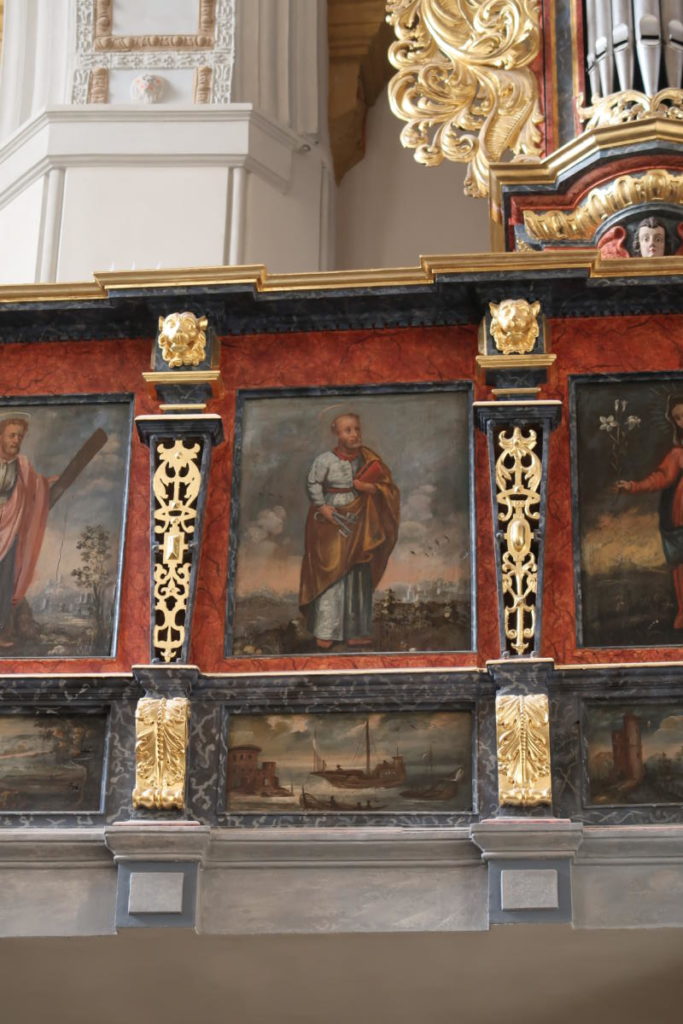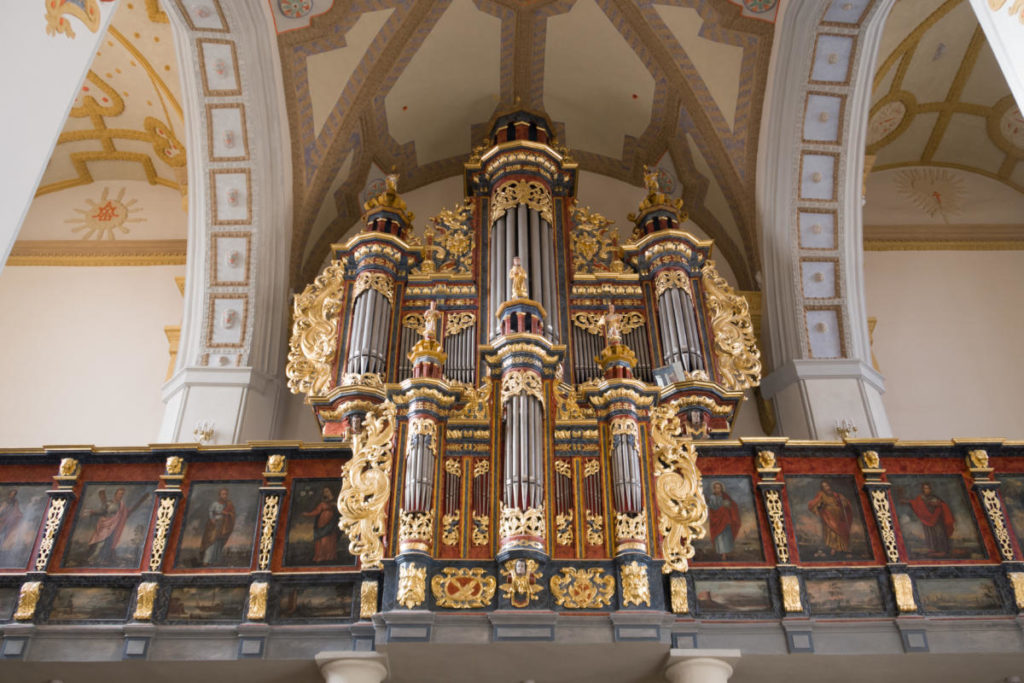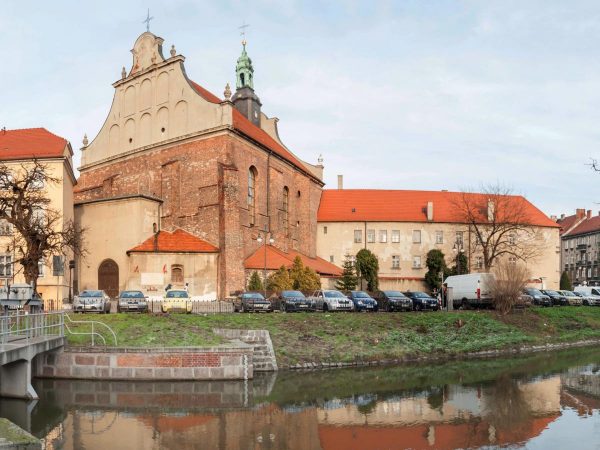
Church of st. Stanislaus the Bishop Martyr in Kalisz
RENOVATION OF THE ORGAN FRONT IN THE FRANCISCAN CHURCH OF ST. STANISLAUS THE BISHOP MARTYR IN KALISZ
The organ front in the Franciscan church was made at the turn of the 17th and 18th centuries, in the baroque style. It is an integral part of the music gallery which elaborately decorated balustrade was mad in an older, renaissance style. He front had been repainted several times and the parts of gilding had been covered with schlagmetal.
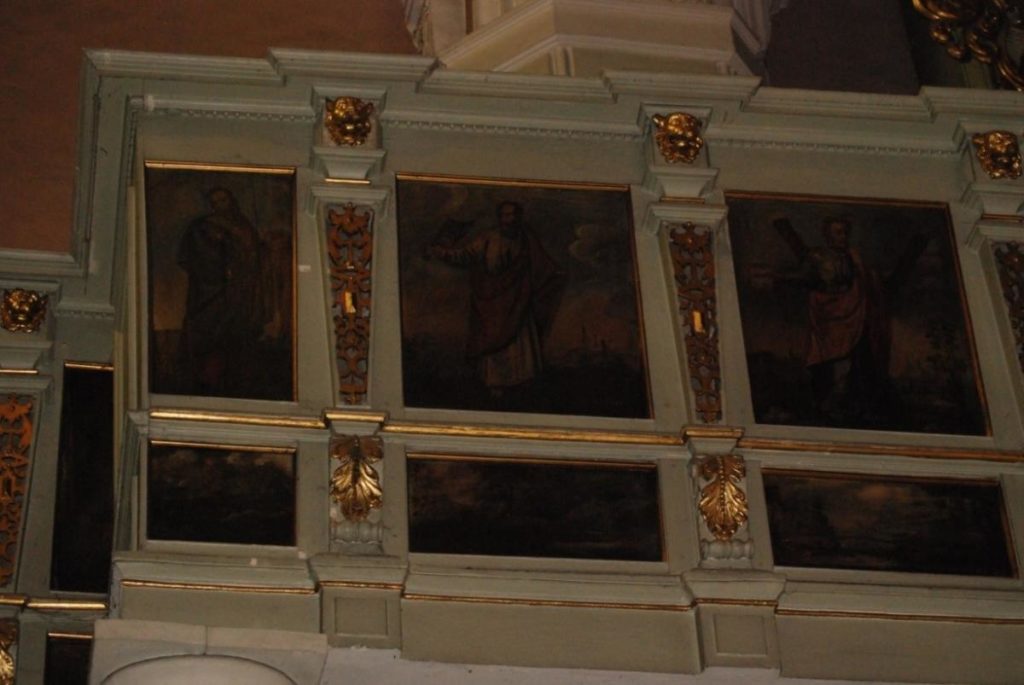
The object’s preservation state was affected by conditions inside the church, as well as previous incompetent renovations. The activity of woodboring beetles weakened the structure of wood. The whole object and the sculptures had been unoriginally repainted, many contaminations, loosenings and cracks of the paint layer as well as wiped gilding were seen, some of these had been mechanically damaged.
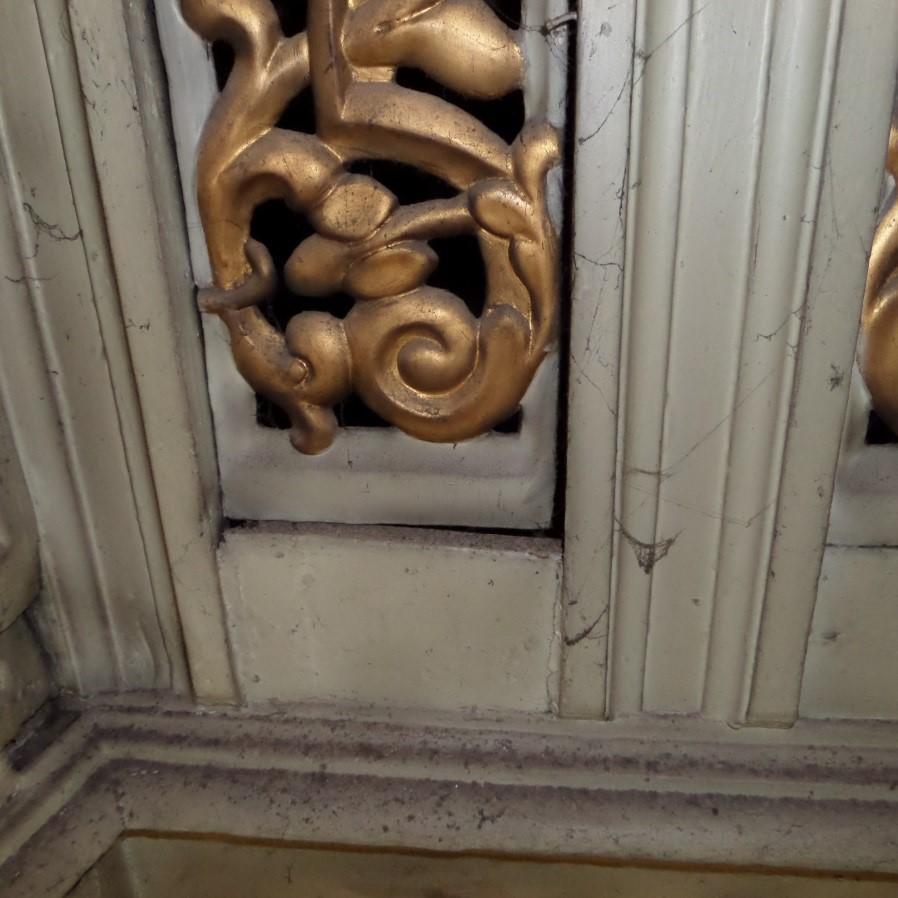
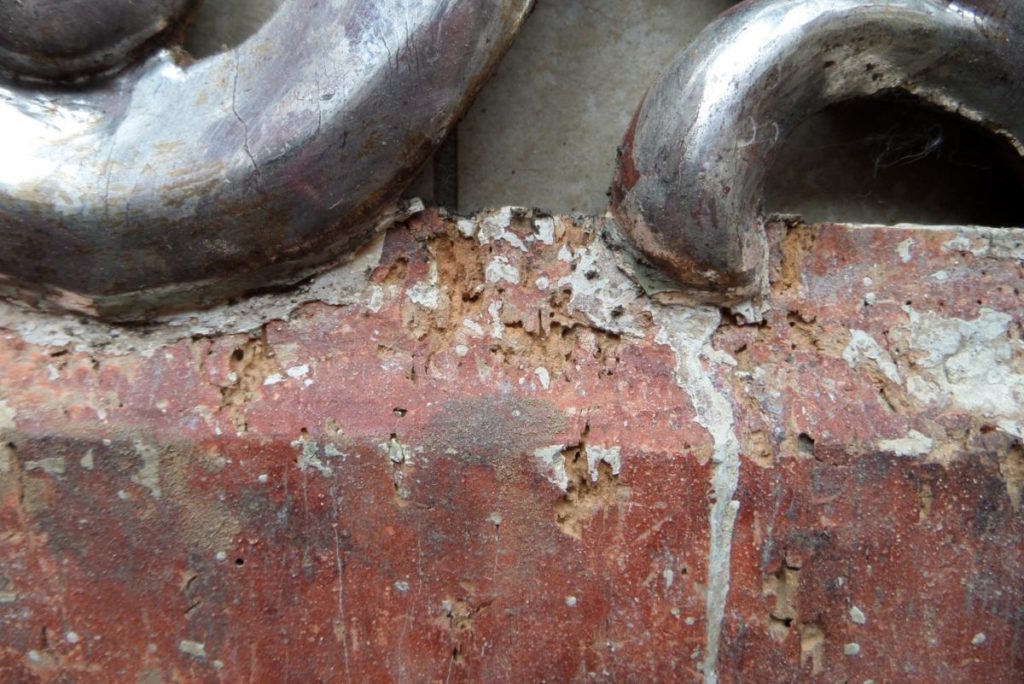
The full agenda of the renovation works aimed at restoring the original artistic concept which would lead to the restoration of the organ front’s original appearance in relation to polychromy, gilding and silvering.
The works started with preliminary, surface cleaning of the whole organ front from much dust and cobwebs. Photos which documented the existing state of the front were taken. The surface was examined in the side and available light. Next, the object was partly disassembled, large and small elements separately.
Tests with solvents were conducted as well as tests to find a product which supported wood structure and consolidated individual historical layers. The object was sterilized with a spray product, the disassembled elements were spayed twice, and then it was wrapped with foil. After the foil was removed, no active groups of insects were noticed.
Repaintings were ablated chemically and mechanically with a scalpel, and individual elements were cleaned. Preliminary testing uncoverings were done which illustrated the amount and the condition of the original layer of paint. They showed that on the basis of the original fragments it would be possible to reconstruct the polychromy in the missing parts of the organ front. Tests revealed that the surface of the original polychromy in the area of the choir balustrade, and the big and small front preserved in around 50%. In the bottom part of the choir balustrade during cleaning works, the original polychromy in distemper technique was discovered under the supporting beam. Part of gilding with gloss finish in the top parts of the front, on the chambranles, had been covered with schlagmetal, but after the cleaning their structure remained unchanged. Gilding turned slightly matt, and there were wipes and dirt seen, which were removed with a conservation product.
Part of oil paint layer and unoriginal primers and chalk-adhesive putties were removed. After cleaning, a bigger access was obtained to the part of wood destroyed by insects. Supporting procedure was introduced, and then the losses of the wooden base were filled. Structural putties were placed, and next the surface of losses was processed correctly. Small reconstructions of the woodcarved details were done.
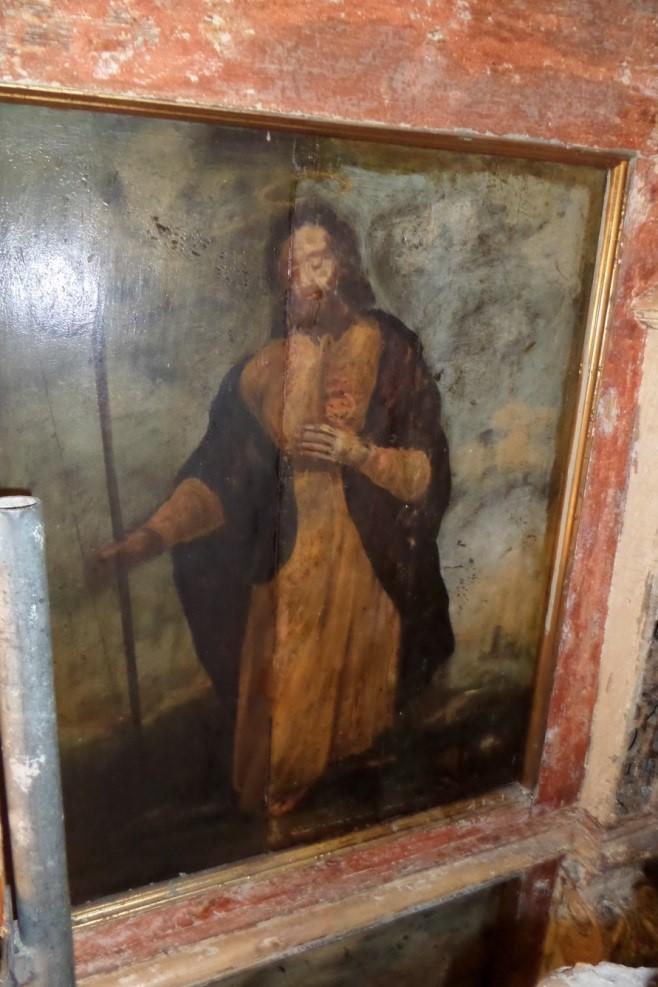
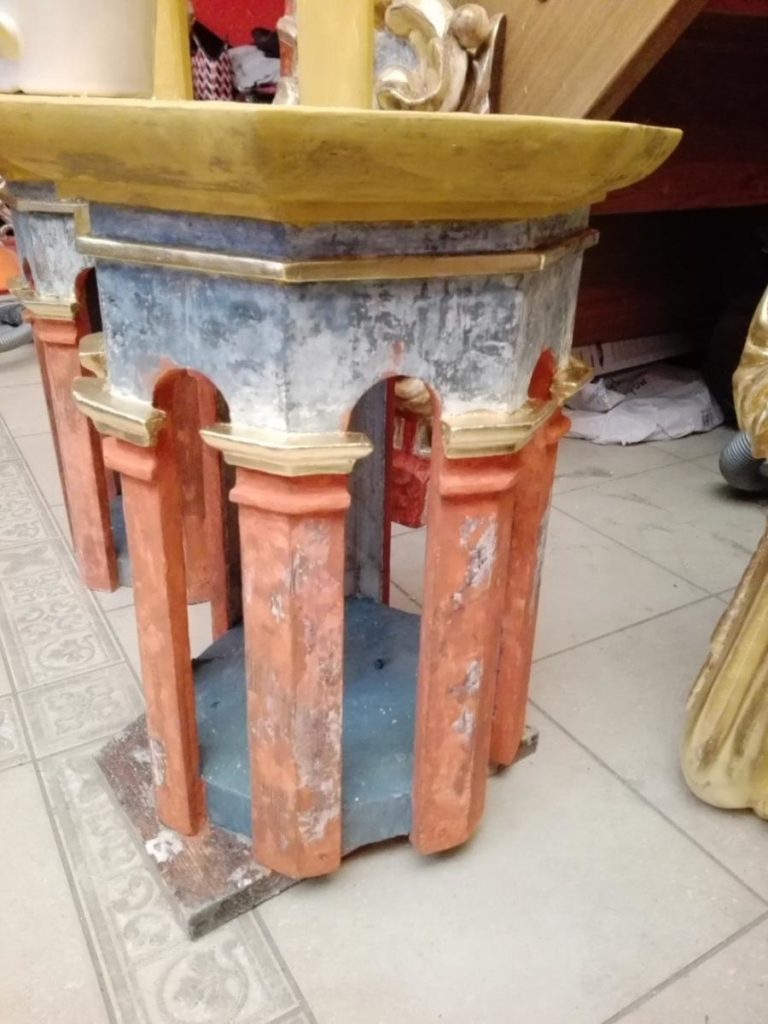
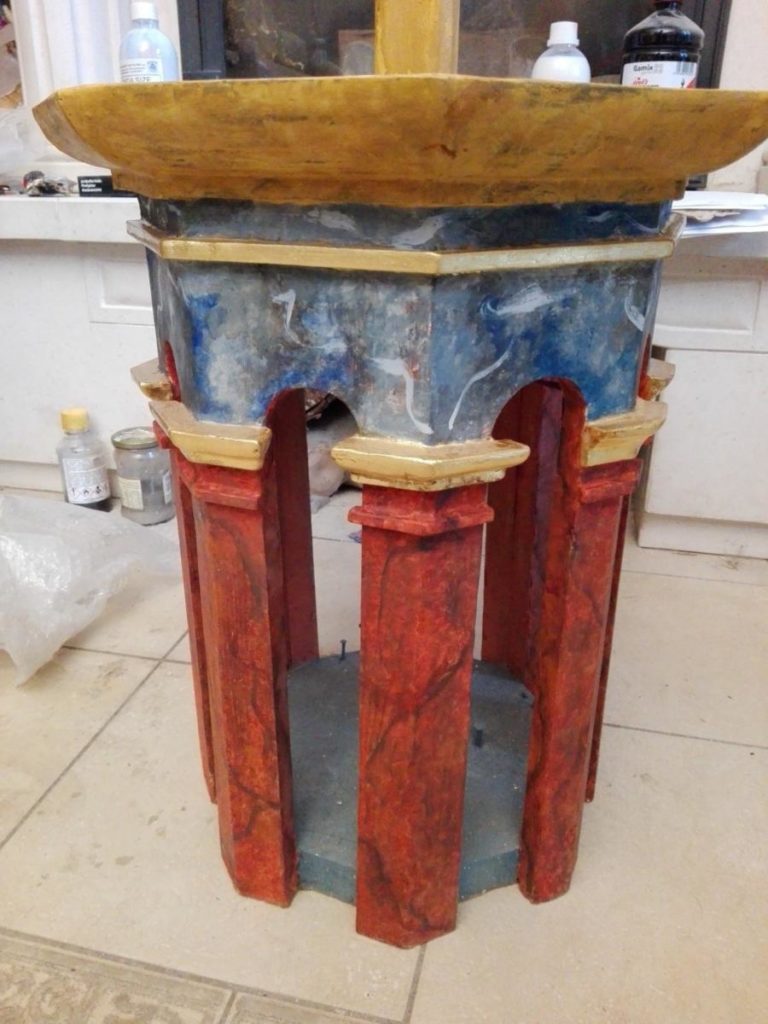
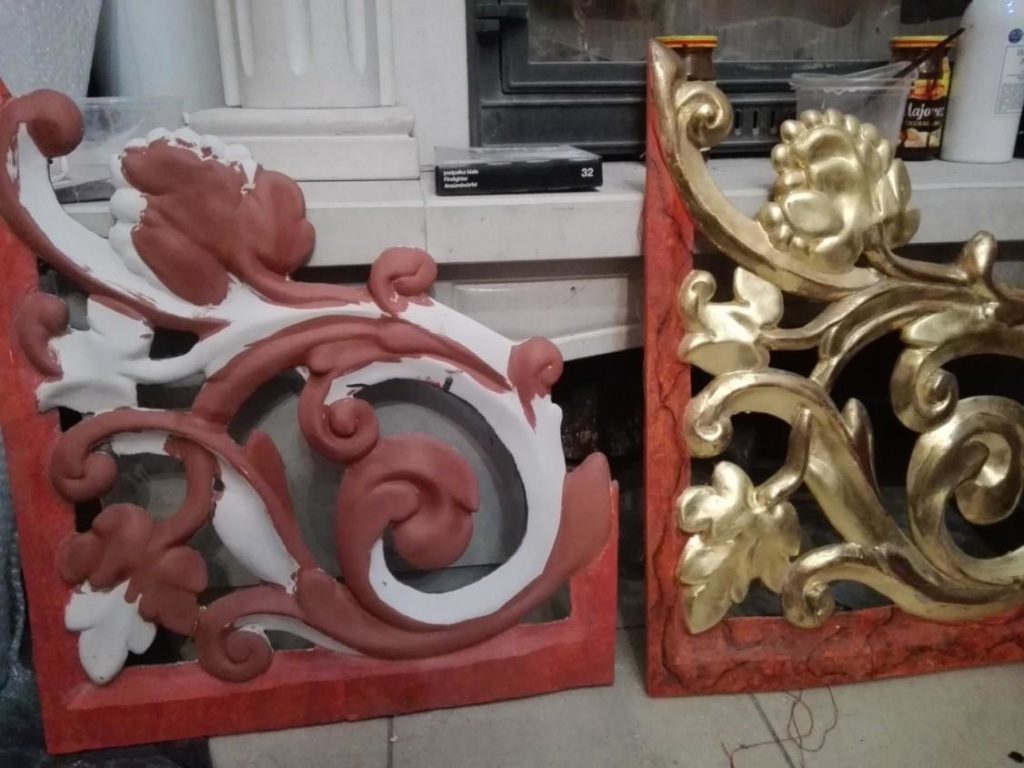
The next stage involved application of putties on the acrylic base and their correct processing. Then surfaces were prepared for parts of new gilding with gloss and matt finish. Resin-based paints were used for filling of the missing polychromy of the organ front and to stippling paintings from the choir balustrade and the organ front. Paintings were secured with dammar varnish. Surfaces of other elements were secured with satin varnish and microcrystalline wax, surfaces were correctly processed in order to obtain semi-mat surface, gilding was protected with shellac. All disassembled elements were put in place and reassembled. Photographic and descriptive documentation was made.
